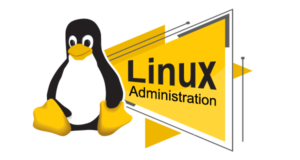 Our Modified programs are collaborated with our clients and identify the very aspect of their training needs and set a solid foundation for the customized training program.
Our Modified programs are collaborated with our clients and identify the very aspect of their training needs and set a solid foundation for the customized training program.
System Administrator
Our System Administrator (sysadmin) training syllabus for aspiring an information technology professional who supports a multiuser computing environment and ensures continuous, optimal performance of IT services and support systems. System Administrators (Sysadmins) are responsible for ensuring the uptime of their companies’ computers, servers and internet. This includes system maintenance and configuration, such as installing and troubleshooting hardware and software and assessing new technologies for their companies.
Duration – 2 Months 10 Days (1.5 Hr. Per Day)
Fee – ₹ 18,500 Only
What you’ll learn
Hardware:
- Why a binary number system?
- SMPS
- Microprocessor
- (Generation, 32-bit/64, Core & Threats, L1 L2 L3 Cache)
- Types of memory (Primary, Secondary, Virtual, Cache)
- RAM Types (SD-RAM, DDR-RAM)
- Memory Units
- Frequency & Bandwidth calculation of RAM
- Types of HDD (SATA/PATA) and SSD (NVMe & M.2)
- BIOS ROM
- Motherboard ports & slots
Networking:
- Client, Server & Network
- Client/Server operating system
- Version, Editions & Kernel
- Partitioning (MBR, GPT)
- Legacy BIOS & UEFI Partitions
- File system & Formatting
- Deploying Windows 10 (CD/DVD, USB)
- User Profiles
- NIC, MAC Address & IP Address
- IPV4 Addressing (Class A, B & C)
- Loopback, APIPA Address, Private/Public Address, Broadcast/Network Address
- Sharing files & folders
- (Simple sharing, Administrative/Hidden sharing)
Job Role: System Administrator
Average Salary Expected – ₹ 3.5 Lakhs
Server Administrator 
Our Server Administrator training syllabus for aspiring A Server Administrator who is responsible for the computer servers of an organization. This individual ensures on a daily basis that they are running efficiently by performing upgrading and maintenance tasks on hardware and software, resolving technical problems, overseeing their activity levels, ensuring server security, and developing new system structures when necessary.
Duration – 1 Month (1.5 Hr. Per Day)
Fee – ₹ 18,500 Only
What you’ll learn
(Windows Server 2022)
- Install Windows servers in host and compute environments
- Install and configure active directory domain service
- Manage and Maintain AS DS
- Configure domain client network
- Create and manage group policy
- Implement domain name system
- Implement DHCP
- Implement storage solutions (RAID-5)
- Manage and maintain web server (IIS)
- Manage and Maintain FTP server
- Maintain and monitor server environments
Job Role – Server Administrator
Average Salary Expected – ₹ 4.2 Lakhs
Network Administrator
Our Network Administrator training syllabus for aspiring Network administrators design, manage, and maintain technological networks. They work within organizations and government agencies to oversee local area networks, wide area networks, network segments, and other data communication systems as needed. The ideal candidate will be able to deploy, configure, maintain and monitor all active network equipment in order to ensure smooth network operation.
Job Role: Network Administrator
Average Salary Expected – ₹ 3.8 Lakhs
What you’ll learn
CCNA (Cisco Certified Network Associate) 200-301
- 20% 1.0 Network Fundamentals
- Explain the role and function of network components
- Describe the characteristics of network topology architectures
- Compare physical interface and cabling types
- Identity interface and cable issues (collisions, errors, mismatch duplex, and/or speed)
- Compare TCP to UDP
- Configure and verify IPv6 addressing and prefix
- Compare IPv6 address types 1.9.a Global unicast
- Verify IP parameters for client OS (Windows, Mac OS, Linux)
- Describe wireless principles
- Explain virtualization fundamentals (virtual machine)
- Describe switching concepts 1.13.a Mac learning and aging
- 20% 2.0 Network Access
- Configure and verify VLANs (normal range) spanning multiple switches
- Configure and verify interswitch connectivity
- Configure and verify Layer 2 discovery protocols (Cisco Discovery Protocol and LLDP)
- Configure and verify (Layer 2/Later 3) Ether channel (LACP)
- Describe the need for and basic operations of rapid PVST+ spanning Tree Protocol and identify basic operations
- Compare Cisco Wireless Architectures and AP modes
- Describe physical infrastructure connections of WLAN components (AP, WLC, access/trunk ports, and LAG)
- Describe AP and WLC management access connections (Telnet, SSH, HTTPS, console, and TACACS+/RADIUS)
- Configure the components of a wireless LAN access for client connectivity using GUI only such as WLAN creation, security settings, QoS Profiles, and advanced WLAN settings
- 25% 3.0 IP Connectivity
- Interpret the components of routing table 3.1.a Routing protocol code
- Determine how a router makes a forwarding decision by default 3.2.a Longest match
- Configure and verify IPv4 and IPv6 static routing
- Configure and verify single area OSPFv2 3.4.a Neighbor adjacency
- Describe the purpose of first hop redundancy protocol
- 10% 4.0 IP Service
- 1 Configure and verify inside source NAT using static and pools
- 2 Configure and verify NTP operating in client and server mode
- 3 Explain the role of DHCP and DNS within the network
- 4 Explain the function of SNMP in network operations
- 5 Describe the use of syslog feature including facilities and levels
- 6 Configure and verify DHCP client and relay
- 7 Explain the forwarding per-hop behavior (PHB) for QoS such as classification, marking, queuing, congestion, policing, shaping
- 8 Configure network devices for remote access using SSH
- 9 Describe the capabilities and function of TFTP/FTP in the network
- 15%5 5.0 Security Fundamentals
- 1 Define key security concepts (Threats, vulnerabilities, exploits, and mitigation techniques)
- 2 Describe security program elements (user awareness, training, and physical access control)
- 3 Configure device access control using local password
- 4 Describe security password policies elements, such as management, complexity, and password alternatives (multifactor authentication, certificates, and biometrics)
- 5 Describe remote access and site-to-site VPNs
- 6 Configure and verify access control lists
- 7 Configure Layer 2 security features (DHCP snooping, dynamic ARP inspection, and port security)
- 8 Differentiate authentication, authorization, and accounting concepts
- 9 Describe wireless security protocols (WPA, WPA2 AND WPA3)
- 10 Configure WLAN using WPA2 PSK using the GUI
- 10%6.0 Automation and Programmability
- 1 Explain how automation impacts network management
- 2 Compare traditional networks with controller-based networking
- 3 Describe controller-based and software defined architecture (overlay, underlay, and fabric)
- 4 Compare traditional campus device management with Cisco DNA Center enabled device management
- 5 Describe characteristics of REST-based APIs (CRUD, HTTP verbs, and data encoding)
- 6 Recognize the capabilities of configuration management mechanisms Puppet, Chef, and Ansible
- 7 Interpret JSON encoded data
 Linux Administrator
Linux Administrator
Our Linux Administrator training syllabus for aspiring Red Hat System Administration 1(RH124) who is Designed for IT Professionals who are new to Linux. This course will actively engage students in task focused activities, lab- based knowledge checks, and facilitative discussions to ensure maximum skill transfer and retention. In addition, GUI-based Environment will be featured to build on the student’s existing technical knowledge. while command line concepts will be introduced to provide a foundation for students planning to become full time Linux system administrator. Students who attend System Administration I and System Administration II (RH134) will be fully prepared to take the Red Hat Certified System Administration (RHCSA)Exam.
Duration – 2 Months (1.5 Hr. Per Day)
Fee – ₹ 24,500 Only
What you’ll learn
RH124 Red System Administrator l
- Get started with red Hat Enterprise Linux
- Access the command line
- Manage files from the command line
- Get help in Red Hat Enterprise Linux
- Create, view, and edit text files
- Manage local users and groups
- Control access to files
- Monitor and manage Linux processes
- Control services and daemons
- Configure and secure SSH
- Analyze and store logs
- Manage networking
- Archive and transfer files
- Install and update software
- Access Linux files systems
- Analyze servers and get support
- Comprehensive review
RH134 Red Hat System Administration ll
- Improve command line productivity
- Schedule future tasks
- Tune system performance
- Control access to files with ACLs
- Manage SE Linux security
- Manage Basic Storage
- Manage logical volumes
- Implement advanced storage features
- Access network-attached storage
- Control the boot process
- Manage network security
- Install Red Hat Enterprise Linux
- Run Containers
Jon Role: Linux Administrator
Average Salary Expected: ₹ 5 Lakhs
AWS Cloud Administrator

Our AWS Cloud Administrator training syllabus for aspiring AWS Cloud Administrators are mainly responsible for deploying, managing, and operating various required systems on the given AWS platform. The main responsibility of an AWS Administrator is to configure cloud management services on AWS in the organization. Further, as an AWS Administrator, you need to manage and monitor numerous AWS services involved. A cloud administrator works to maintain the infrastructure and functionality of a company’s cloud structures. You will assist the client in installing their cloud services while working alongside cloud engineers and other cloud management employees to ensure that networks continue to function well.
What you’ll learn
AWS Certified Solutions Architect – Associate
- Module 1: Architecting Fundamentals Review
- Module 2: Account Security
- Module 3: Networking, Part 1
- Module 4: Compute
- Module 5: Storage
- Module 6: Database Services
- Module 7: Monitoring and Scaling
- Module 8: Automation
- Module 9: Containers
- Module 10: Networking Part 2
- Module 11: Serverless Architecture
- Module 12: Edge Services
- Module 13: Backup and Recovery
EARN WHILE YOU LEARN
Our company offers an opportunity to our trainees to be an Advisor of the company to earn while they learn. A person who will work for our company to help in student counseling and enrollment for our online training programme is known as Advisor.
